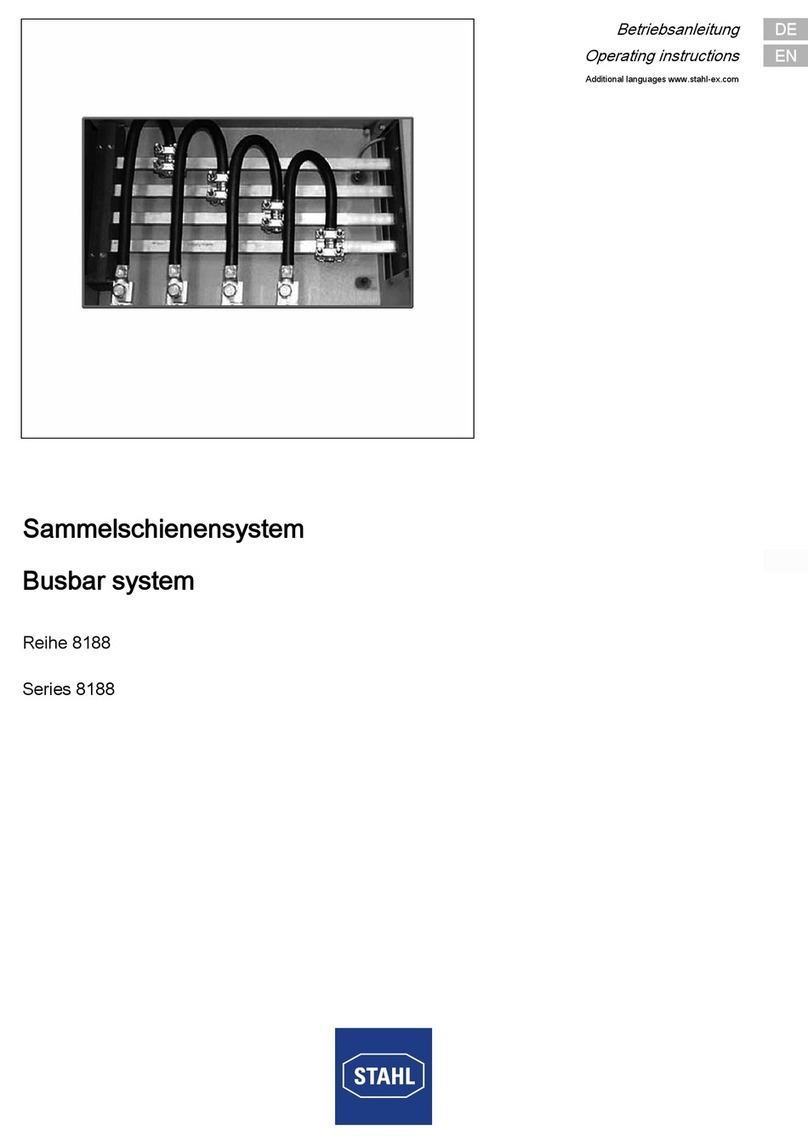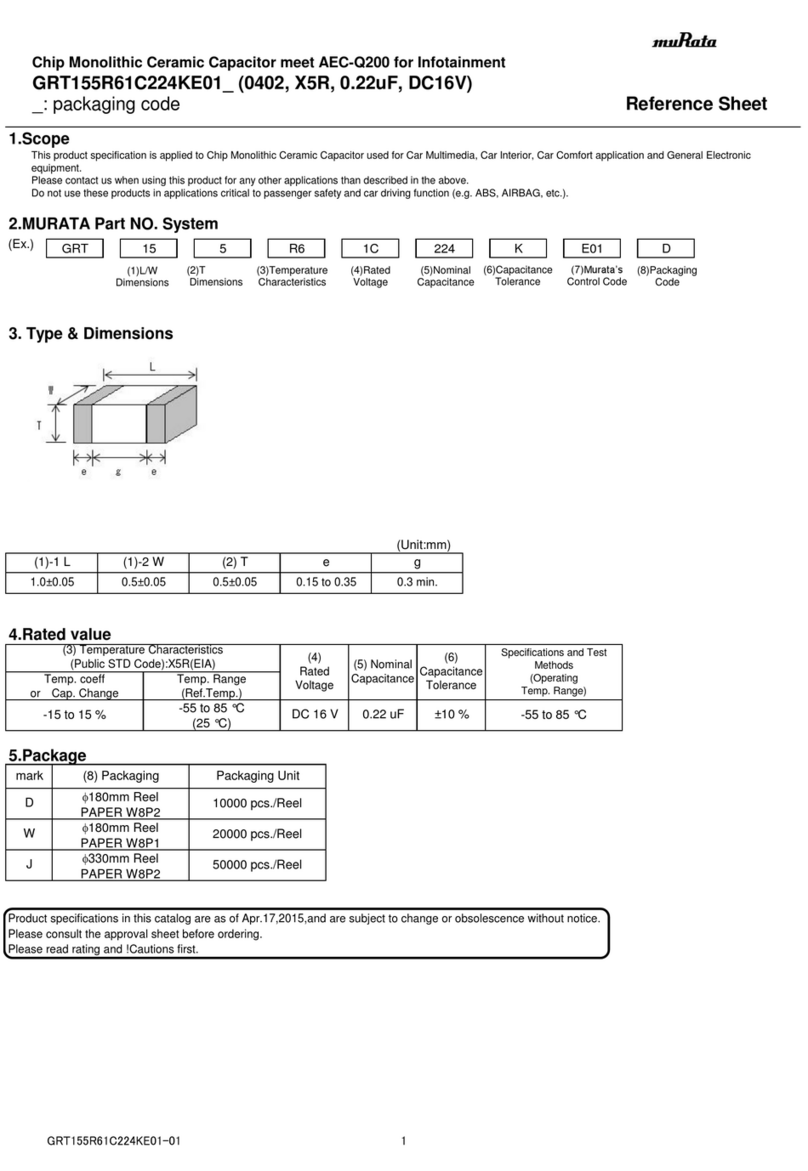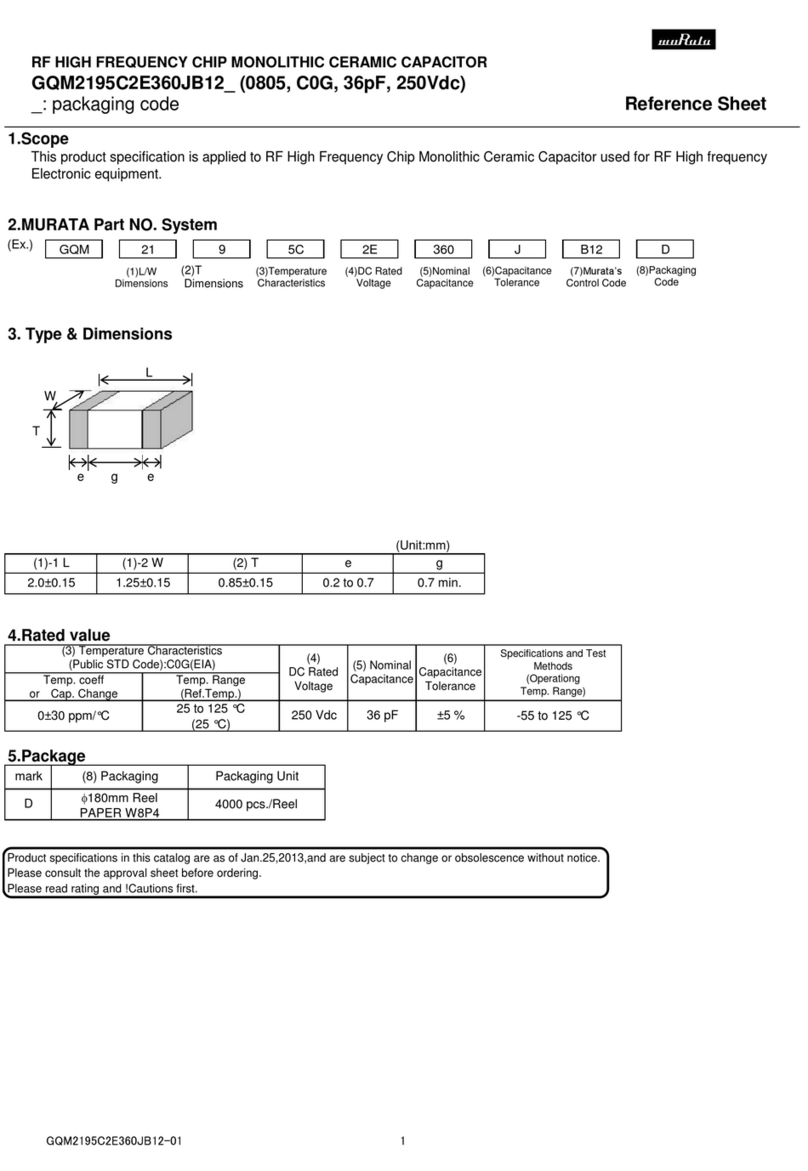Riello LMV5 Series Training manual

2915921 (3) - 03/2009
LMV51... / LMV52…
Display and settings / Commissioning instructions


15921
Contents
1 Safety notes................................................................................................................................................................................ 2
8 Commissioning instructions for the LMV5... system ........................................................................................................... 29
17 Addendum 3: Variable speed drive (VSD) module................................................................................................................ 50

5921 2
Safety notes
1.1 Warnings
The present Basic Documentation describes a wide choice of ap-
plications and functions and shall serve as a guideline. The cor-
rect functioning is to be checked and proven with the help of
function tests on a test rig or on the plant itself!
• All activities (mounting, installation and service work, etc.)
must be performed by qualified staff
• Degree of protection IP40 as per DIN EN 60 529 for burner
controls must be ensured through adequate mounting by
the burner or boiler manufacturer
• Before making any wiring changes in the connection area of
the LMV5..., completely isolate the plant from mains supply
(all-polar disconnection). Ensure that the plant cannot be
inadvertently switched on again and that it is indeed dead. If
not observed, there is a risk of electric shock hazard
• Protection against electrical shock hazard on the LMV5...
and on all connected electrical components must be
ensured through appropriate mounting
• Each time work has been carried out (mounting, installation
and service work, etc.), check to ensure that wiring is in an
orderly state, that the parameters have been correctly set
and make the safety checks as described in "Commission-
ing notes"
• Fall or shock can adversely affect the safety functions. Such
units must not be put into operation even if they do not
exhibit any damage
• In programming mode, the position check of actuators and
VSD (checking electronic fuel / air ratio control) is different
from the check during automatic operation.
Like in automatic operation, the actuators are still jointly
driven to their required positions. If an actuator does not
reach the required position, corrections are made until that
position is reached. However, in contrast to automatic oper-
ation, there are no time limits to these corrective actions.
The other actuators maintain their positions until all actua-
tors have reached the positions currently required. This is
essential for setting fuel /air ratio control. This means that
during the time the fuel / air ratio curves are programmed,
the person making the plant settings must continuously
monitor the quality of the combustion process (e.g. by
means of a flue gas analyzer). Also, if combustion levels are
poor, or in the event of dangerous situations, the commis-
sioning engineer must take appropriate action (e.g. switch-
ing off manually)
To ensure the safety and reliability of the LMV5... system, the fol-
lowing points must also be observed:
– Condensation and ingress of humidity must be avoided.
Should such conditions occur, make sure that the unit will be
completely dry before switching on again!
– Static charges must be avoided since they can damage the
unit's electronic components when touched. Recommenda-
tion: Use ESD equipment
1.2 Mounting notes
• Ensure that the relevant national safety regulations are
complied with
• In the geographical areas where DIN regulations apply, the
requirements of VDE must be satisfied, especially the
standards DIN / VDE 0100, 0550 and DIN / VDE 0722
1 Safety notes
WARNING
To avoid injury to persons, damage to proper-
ty or the environment, the following warning
notes must be observed!
The LMV5... is a safety device! Do not open, in-
terfere with or modify the unit. Siemens will
not assume responsibility for any damage re-
sulting from unauthorized interference!
The addendum to the LMV51.2... and LMV52...
documentation contains additional warning
notes which should also be observed when
using these system versions. After commis-
sioning and after each service visit, check the
flue gas values across the entire load range.
Risk of explosion!
Incorrect configuration can lead to excessive
fuel supply which might cause an
explosion! Operators must be aware that in-
correct settings made on the AZL5… display
and operating unit and incorrect settings of
the fuel and / or air actuator positions can lead
to dangerous burner operating conditions.

35921
Safety notes
1.3 Installation notes
• Ensure that the electrical wiring inside the boiler is in com-
pliance with national and local safety regulations
• Do not mix up live and neutral conductors
• Make certain that strain relief of the connected cables is in
compliance with the relevant standards (e.g. as per DIN EN
60730 and DIN EN 60 335)
• Ensure that spliced wires cannot get into contact with neigh-
boring terminals. Use adequate ferrules
• Always run high-voltage ignition cables separately
while observing the greatest possible distance to the
unit and to other cables
• The burner manufacturer must protect unused AC 230 V
terminals with dummy plugs (refer to sections Suppliers of
other accessory items)
• When wiring the unit, ensure that AC 230 V mains voltage
cables are run strictly separate from extra low-voltage
cables to warrant protection against electrical shock hazard
• This equipment has been tested and found to comply with
the limits for a Class A digital device, pursuant to part 15
of the FCC Rules. These limits are designed to provide rea-
sonable protection against harmful interference when the
equipment is operated in a commercial environment. This
equipment generates, uses, and can radiate radio fre-
quency energy and, if not installed and used in accordance
with the Instruction Manual, may cause harmful interference
to radio communications. Operation of this equipment in a
residential area is likely to cause harmful interference in
which case the user will be required to correct the interfer-
ence at his own expense
• This equipment has been tested and found to comply with
the limits for a Class B digital device, pursuant to part 15
of the FCC Rules. These limits are designed to provide rea-
sonable protection against harmful interference in a resi-
dential installation. This equipment generates, uses and can
radiate radio frequency energy and, if not installed and used
in accordance with the instructions, may cause harmful
interference to radio communications. However, there is no
guarantee that interference will not occur in a particular
installation
If this equipment does cause harmful interference to radio or tel-
evision reception, which can be determined by turning the equip-
ment off and on, the user is encouraged to try to correct the
interference by one or more of the following measures:
• Reorient or relocate the receiving antenna
• Increase the separation between equipment and receiver
• Connect the equipment into an outlet on a circuit different
from that to which the receiver is connected
• Consult the dealer or an experienced radio / TV technician
for help
1.4 Setting and parameter setting notes
• When adjusting the electronic fuel / air ratio control system
integrated in the LMV5…, allow for sufficient amounts of
excess air since over a period of time the flue gas settings
will be affected by a number of factors (e.g. density of air,
wear of actuating devices, etc.). For this reason, the flue
gas values initially set must be checked at regular intervals
• To provide protection against inadvertent or unauthorized
parameter transmission between the parameter backup
memory of the AZL5... display and operating unit and the
LMV5... basic unit, the OEM (burner or boiler manufacturer)
must enter an individual burner identification (ID) for every
burner. Compliance with this regulation is mandatory to
ensure that the LMV5… system will prevent parameter sets
from other plant (with unsuited and possibly dangerous
parameter values) to be transmitted to the LMV5… basic
unit via the backup memory of the AZL5... (also refer to the
description of burner identification in chapter Display and
operating unit AZL5...)
• With the LMV5..., it is to be noted that the unit's characteris-
tics are determined primarily by the specific parameter set-
tings rather than by the type of unit. This means that, among
other things, each time a plant is commissioned, the param-
eter settings must be checked and the LMV5... must not be
transferred from one plant to another without adapting the
parameter settings to the new plant
• In the case of dual-fuel burners and oil-firing, the short
preignition (phase 38) parameter OnTmeOilIgnition is to be
selected and a magnetic clutch is to be used, ensuring that
there will be no oil pressure until this phase is reached. The
magnetic clutch can be renounced at a pure oil burner, then
the long preignition (from phase 22) must be parameterized
• When using the ACS450 PC software, the safety notes
given in the relevant Operating Instructions (CC1J7550)
must also be observed
• A password protects the parameter setting level against
unauthorized access. The OEM allocates individual pass-
words to the setting levels he can access. The standard
passwords used by Siemens must be changed by the OEM.
These passwords are confidential and may only be passed
on to persons authorized to access such setting levels
• The responsibility for setting the parameters lies with the
person who in accordance with his access rights has made
changes to the respective setting level
NOTE
:
In particular, the OEM will assume responsibility for the cor-
rect parameter settings in compliance with the standards
covering the specific applications (e.g. EN 676, EN 267, EN
1643, etc.).

5921 4
Safety notes
1.5 Standards and certificates
1.6 Service notes
NOTE
:
If fuses are blown, please contact the Manufacturer.
1.7 Life cycle
Burner controls has a designed lifetime1of 250,000 burner start-
up cycles which, under normal operating conditions in heating
mode, correspond to approx. 10 years of usage (starting from the
production date given on the type field). This lifetime is based on
the endurance tests specified in standard EN298 and the table
containing the relevant test documentation as published by the
European Association of Component Manufacturers (Afecor)
(www.afecor.org).
The designed lifetime is based on use of the burner controls ac-
cording to the manufacturer's Data Sheet and Basic Documenta-
tion. After reaching the designed lifetime in terms of the number
of burner startup cycles, or the respective time of usage, the
burner control is to be replaced by authorized personnel.
1.7.1 Disposal notes
Conformity to EEC directives
- Electromagnetic compatibility EMC (immunity) 2004/108/EC
- Directive for gas-fired appliances 90/396/EEC
- Low-voltage directive 2006/95/EC
- Directive for pressure devices 97/23/EEC
- Safety limit thermostats to EN 14597
ISO 9001: 2000
Cert. 00739 ISO 14001: 2004
Cert. 38233
Type CSA
LMV51.000C1 xx--- x xxx xxx
LMV51.000C2 x x x x --- --- --- x x x
LMV51.040C1 --- x --- --- x x x x x x
LMV51.040C2 --- x x --- --- --- --- x x x
LMV51.100C1 xx--- x xxx xxx
LMV51.100C2 x x x x --- --- --- x x x
LMV51.140C1 --- x --- --- x x x x x x
LMV51.140C2 --- x x --- --- --- --- x x x
LMV51.200A1 xx--- x xxx xxx
LMV51.200A2 x x --- x --- --- --- x x x
LMV51.300B1 x x --- x x x x --- x x
LMV51.300B2 x x --- x --- --- --- --- x x
LMV51.340B1 --- x --- --- x x x --- x x
LMV52.200B1 x x --- x x x x --- x x
LMV52.200B2 x x --- x --- --- --- --- x x
LMV52.240B1 --- x --- --- x x x --- x x
LMV52.240B2 --- x --- --- --- --- --- --- x x
V D E
FM
APPROVED
1. The designed lifetime is not the warranty time specified in
the Terms of Delivery
The unit contains electrical and electronic compo-
nents and must not be disposed of together with
household waste. Local and currently valid legis-
lation must be observed.

7.3 Display and settings
7.3.1 Menu structure
AZL
Resetting
AZL operation
7550d01E/0402
Esc Enter < Select >
+
+
-+
+
+
+
+
+
-+ -+
-+
-+ -+
SafetyCheckFunct LossFlameTest
STL test
Autom/Manual/Off
Inp3Config_C/V
Main menu level
Display of operation
Operation
Manual operation
Parameterization
& display
Updating
PW Login
PW Logout
Password-protectedrange
Normal operation
Presetting without pressing the buttons
Fault history
Lockout history
Boiler setpoint
Type of fuel
Date, time of day
Hours run
Start counter
Number of lockouts
Burner ID
Selection of operating mode
Set load
Autom / Manual / Off
Burner control
Times
Flame detector test
Configuration
Valve proving
System ID BC
SW version
e-bus Address
Date format
Times
Language
Physical units
e-bus Sendcycle BU
Display Contrast
System ID AZL
SW version
Passwords
Burner ID
Parameter backup
Load SW from PC
Submenu selection
Ratio control
Gas settings
Oil settings
Times
Number of fuel actuators
Program stop
Shutdown behaviour
Addressing
Direction of rotation
System ID ACT
SW version
Actuators
Hours run
Load controller
Configuration
Adaptation (PID part)
SW version
Controller parameters
Temperature limiter
Cold start
System configuration
LC operating mode
Temperatur e limiter
Start counter
5
5921

Below, the most important displays of «Normal operation» and examples of «Lockout
and start prevention messages» and «Parameter settings» are defined.
In «Normal operation», the display shown is the default display which automatically ap-
pears and which is maintained as long as no settings are made and no unusual events
like faults or start preventions occur.
The change from other displays to the normal display can be made by pressing the Info
button.
If the startup procedure shall be watched, the display can be switched to «Normal op-
eration» by simultaneously pressing the Select buttons «<» and «>» or the «Info» but-
ton.
Normal operation (undisturbed, no manual entries)
HOME RUN (Phase 10)
LMV 5x
Home 10
S t a r t N o 1 2 3 4 5 6
F 0 5 . 1 A 0 2 . 4 0 4 . 3
STANDBY (Phase 12)
S e t p o i n t 1 2 5 ° C
A c t V a l u e 1 2 4 ° C
F u e l O i l
S t a n d b y 1 2
STARTUP I (Phases 20, 21)
W a i t i n g f o r
S t a r t R e a l a s e 2 1
F 0 5 . 1 A 0 2 . 4 0 4 . 3
STARTUP II (Phase 22)
Start
F a n o n 2 2
F 0 5 . 1 A 0 2 . 4 0 4 . 3
STARTUP III (Phase 24)
D r i v i n g t o
P r e - p u r g i n g 2 4
F 0 5 . 1 L 4 4 . 6 3 0 . 3
STARTUP IV (Phases 30...34)
P r e - p u r g i n g 3 2
F 0 5 . 1 L 9 4 . 6 9 8 . 3
STARTUP V (Phase 36)
D r i v i n g t o
I g n i t i o n P o s 3 6
F 6 5 . 1 L 4 4 . 6 1 0 . 3
Displays
5921
6

STARTUP VI (Phase 38)
I g n i t i o n P o s 3 8
F 3 2 . 1 L 4 2 . 3 2 2 . 3
STARTUP VII (Phases 40, 42, 44)
F u e l
R e l e a s e 1 4 0
F l a m e 8 0 %
F 3 2 . 1 L 4 2 . 3 2 2 . 3
STARTUP VIII (Phases 50, 52)
F u e l
R e l e a s e 2 5 0
F l a m e 8 0 %
F 3 2 . 1 L 4 2 . 3 2 2 . 3
STARTUP IX (Phase 54)
D r i v i n g t o
L o w - f i r e 5 4
F 2 8 . 5 L 3 8 . 3 1 8 . 5
OPERATION I (Phase 60)
S e t p o i n t 1 2 5 ° C
A c t V a l u e 1 2 4 ° C
S e t L o a d 5 7 . 5 %
F l a m e 1 0 0 %
OPERATION II (Phase 62)
S h u t - d o w n
L o w - f i r e 6 2
F 2 8 . 5 L 1 7 . 6 1 2 . 5
SHUTDOWN (Phase 70)
S h u t d o w n
70
F 2 8 . 5 L 1 7 . 6 1 2 . 5
SHUTDOWN (Phase 72)
D r i v i n g t o
P o s t p u r g e 7 2
F 0 5 . 1 L 4 4 . 6 3 0 . 3
SHUTDOWN (Phases 74...78)
P o s t p u r g i n g 7 4
F 2 8 . 5 L 1 7 . 6 1 2 . 5
Display (cont‘d)
7
5921

SHUTDOWN (Phase 79)
T e s t A i r P r e s s
Switch 79
F 2 8 . 5 L 1 7 . 6 1 2 . 5
VALVE PROVING (Phases 80...83)
V a l v e P r o v i n g
80
E v a c u a t i n g
V a l v e P r o v i n g
81
T e s t a t m o s P r e s s
V a l v e P r o v i n g
82
F i l l i n g
V a l v e P r o v i n g
83
T e s t G a s P r e s s
Displays (cont‘d)
5921
8

SAFETY PHASE (Phase 01)
S a f e t y P h a s e
01
LOCKOUT (Phase 00)
L o c k o u t
R e s e t v i a
O p e r a t i o n a l S t a t
S t a t u s / U n l o c k
Example: Display of lockouts in the lockout history
In the event lockout occurs, the display alternates at 5-second intervals.
Press Enter to choose 1 of the 2 display texts. In that case, the alternating cycle will be
interrupted.
Example: Lockout due to a gas pressure signal in connection with gas valve proving.
1 1 8 . 0 6 . 9 9 1 0 : 3 5
C : 3 1 D : 0 0 P : 8 1
S t a r t N o : 1 2 3 4 5 6
L o a d : 2 5 . 0 G a s
G a s P r e s s u r e w
V a l v e P r o v i n g
V a l v e o n G a s
S i d e l e a k i n g
C = error code D = diagnostics
P = phase VP = gas valve proving
Example: Display of errors in the error history
In contrast to the lockout history, the error history contains the errors of all error classes
and not only the lockouts.
If an error occurs, the display alternates at 5-second intervals.
1 2 C l a s s : 0 3 G A S
C o d e : 2 1 P h a s e : 2 4
D i a g : 0 0 L o d : 0 . 0
S t a r t N o : 1 2 3 4 5 6
Example: Safety loop open
S a f e t y L o o p
o p e n !
Lockout and error
messages
9
5921

Example: Immediate display of lockouts
In the event lockout occurs, the display alternates at 5-second intervals.
L o c k o u t
G a s P r e s s u r e w
V a l v e P r o v i n g
V a l v e o n G a s
S i d e l e a k i n g
Example: Immediate display of safety shutdowns
In the event of safety shutdown, the display alternates at 5-second intervals.
S a f e t y S h u t d o w n
G a s P r e s s u r e h a s
d r o p p e d b e l o w
m i n i m u m L i m i t
Example: Immediate display of warnings
In the event of warnings, the display alternates at 5-second intervals.
W a r n i n g
C u r v e G r a d i e n t
t o o h i g h
Example: Immediate display of start preventions
In the event of start preventions, the display alternates at 5-second intervals.
S t a r t P r e v e n t i o n
A i r P r e s s u r e
on
Lockout and error messages
(cont‘d)
5921
10

For the complete parameter list, refer to Setting list I7550.
Menu selection
A main menu item is selected as follows:
O p e r a t i o n a l S t a t
O p e r a t i o n
M a n u a l O p e r a t i o n
P a r a m s & D i s p l a y
Calling up and selection
To indicate a selection, the first letter of the menu item is shown with a flashing pointer.
As long as the selection is made by pressing the Select buttons within the 4 menu items
shown on the display, the selection scrolls.
If some other (presently not shown) menu item shall be selected, the menu display
scrolls.
Press Enter to make the final selection.
This calling up and selection procedure is similar on all other menu levels.
Example:
O p e r a t i o n
M a n u a l O p e r a t i o n
P a r a m s & D i s p l a y
U p d a t i n g
Changing the standard parameters
This action is shown using the example of setting the prepurge time of the burner control
section.
Selection of the associated main menu item:
The main menu item «Parameterization & Display» is called up and selected as de-
scribed above:
O p e r a t i o n a l S t a t
O p e r a t i o n
M a n u a l O p e r a t i o n
P a r a m s & D i s p l a y
P= flashing pointer
Standard
parameterizations (incl.
entry of password)
11
5921

It is very important to study chapter «Safety notes on settings and parameteriza-
tion»!
Before changing to the parameter settings range, a password must be entered. For that
purpose, the display shown below appears.
First, the pointer points to the first character of the line «Access without PW». Access
without password is always available for access level «Enduser».
xIf a valid password has been entered, there will be no more password prompt when ac-
cessing this parameter setting level until the end of the legitimation period is reached, or
until legitimation is manually deactivated
xIf required, access to the parameters can be deactivated on the bottom line of the main
menu before the legitimation period expires
If a password shall be entered, line «Enter password» is selected by means of decre-
menting (pointer points to the first character of that line) and selected by pressing Enter.
Then, the pointer jumps to the first position of the password entry line. Now, through in-
crementing or decrementing, a character (digit or letter) can be selected. A character is
confirmed by pressing Enter. If a wrong entry has been made, the last character can be
edited again by pressing Esc.
The other password positions can be selected, edited and entered in a similar way.
Hence, when making an entry, there is always only one character visible.
When the last character of the password is reached, the entry is to be confirmed by
pressing Enter.
xThe passwords are linked to the access levels (Service, OEM, SBT). This means that
the parameters available for editing are only those associated with the access level
xWhen leaving the parameter setting level, a backup is offered
A c c e s s w - o u t P W
A c c e s s S e r v
A c c e s s O E M
A c c e s s S B T
Display before the first password character is entered:
E n t e r P a s s w o r d
:* * * * * * * *
Display when entering the third password character:
E n t e r P a s s w o r d
:* * S * * * * *
If the check of the password entered is positive, the change to the next menu level will
take place. Otherwise, the display will return to the main menu level.
Entry of password (PW)
Start display
Service
OEM = burner manufacturer
SBT = Siemens
5921
12

Example: Calling up and selecting submenu «Burner control»
B u r n e r C o n t r o l
R a t i o C o n t r o l
L o a d C o n t r o l l e r
AZL
Example: Calling up and selecting submenu «Times»
T i m e s
C o n f i g u r a t i o n
V a l v e P r o v i n g
F l a m e F a i l T e s t
Example: Calling up and selecting submenu «Times Startup»
T i m e S t a r t u p 1
T i m e S t a r t u p 2
T i m e S h u t d o w n
T i m e G e n e r a l
First submenu level
Second submenu level
Third submenu level
13
5921

Example: Calling up and selecting parameter «Prepurge Time Gas»
M i n T i m e S t a r t R e l
F a n R u n u p T i m e
P r e - p u r g e T i m e G a s
P r e - p u r g e T i m e O i l
Setting the parameter:
a) After the required parameter has been called up and selected, the display shown be-
low will appear. Lines «Curr» and «New» show identical values at first, namely the
actual parameter value.
The pointer automatically points to the colon on line «New». Here, the required new
value can be entered,
whereby the AZL5… automatically displays the 4 possible line setting ranges with the
associated resolutions:
- 0...12.6 s resolution 0.2 s
- 13...63 s resolution 1 s
- 70...630 s resolution 10 s
- 11...63 min resolution 1 min
P r e - p u r g e T i m e G a s
C u r r : 1 2 . 6 s
N e w : 1 2 . 6 s
Setting the new value
P r e - p u r g e T i m e G a s
C u r r : 1 2 . 6 s
N e w : 3 0 s
b) As soon as the basic unit has handled the parameter settings, the new value appears
on line «Curr». The user has to make certain that the 2 values are identical (safety
test of display).
P r e - p u r g e T i m e G a s
C u r r : 3 0 s
N e w : 3 0 s
The user can return to the next higher menu level by pressing Esc.
Fourth submenu level
5921
14

To make the addressing, the actuator must be opened. A button and an LED are located
behind the actuator’s removable plastic cover.
In connection with addressing with the help of the AZL5…, the button is used to define
the address of an actuator.
When commissioning the plant, the actuators are in their addressing mode.
To indicate this, the LED is steady on. If the LED is not steady on, refer to «Reset» be-
low.
To make the addressing, the following menu is required on the AZL5…:
«Params & Display» Æ«Actuators» Æ«Addressing»
This menu contains the choice of actuators to be addressed (e.g. the air actuator). By
appropriately positioning the pointer and then pressing Enter, the user can select the
required actuator function.
Address assignment is started by pressing Enter. After a short period of time, the user
will be prompted to press the button on the actuator to be addressed.
The AZL5… confirms the successful address assignment. To be sure, the address of
the actuator can be checked against the blink code which now appears.
This procedure can be repeated for other actuators used by the system, but the AZL5…
does not allow double assignments. In that case, a display tells the user that an appro-
priate actuator is already used by the system.
To select the direction of rotation, choose the following menu on the AZL5…:
«Params & Display» o«Actuators» o«DirectionRot»
You are given the choice of «Standard» and «Reversed»:
Standard (counterclockwise) Reversed (clockwise)
90°
0°
0°
90°
7550d29/0903
Facing the end of the drive shaft (not mounted)
To check the direction of rotation, every actuator can be moved in the home position in
fault-free standby mode.
The parameter is filed in the basic unit so that the direction of rotation need not be reen-
tered when replacing the actuator.
Note: After setting the ignition positions or curves, the direction of rotation can
only be changed after deleting the curves and ignition positions on setting
menu «Delete Curves».
This facility makes it possible to reset an already addressed actuator in the case of a re-
placement, repair, or if addressing is wrong (wrong address assignment by the user).
For that purpose, the user must press the actuator’s addressing button for at least 10
seconds when the actuator is in normal operation. The actuator will then reset its ad-
dress which is indicated by the LED when steady on.
LED steady ON
Addressing the actuators
(function assignment)
Direction of rotation
Reset
Operational status indication
by LED on the actuator
Power is fed to
unaddressed actuator
15
5921

Time
7550d11E
OFF
ON
The actuator gives the addressing number via the LED. The blink interval is 200 ms:
1 pulse air actuator
2 pulses gas actuator
3 pulses oil actuator
4 pulses auxiliary actuator
5 pulses auxiliary actuator 2
6 pulses auxiliary actuator 3
After each blink cycle, there is a pause of 1.2 seconds.
Example of an actuator for gas
Time
7550d12E
OFF
ON
Button for addressing is
pressed (display during
addressing procedure)
A
ddressing completed,
normal operation of actuator
5921
16

The following section covers the parameter settings of the curves used by the basic unit
module «Fuel / air ratio control».
Selection menu «Ratio control»
The selection menu looks as follows:
S e t t i n g s G a s 1)
S e t t i n g s O i l 2)
A u t o m / M a n u a l / O f f
3)
T i m e s
4)
N u m F u e l A c t u a t o r s
5)
S h u t d o w n B e h a v 6)
P r o g r a m S t o p
7)
Selection of 3) through 6) leads to standard parameter settings of the parameters speci-
fied.
Selection of 1) leads to:
Selection menu «Settings gas»
Only the data associated with the currently active type of fuel can be parameterized.
S p e c i a l P o s i t i o n s
1)
C u r v e P a r a m
2)
L o a d L i m i t s
3)
L o a d m a s k o u t
4)
A u x A c t u a t o r
5)
Calling up 1) (HomePositions, PrepurgePositions...), 3) through 5) leads to standard pa-
rameter settings of the parameters specified.
Selection of 2) leads to:
Selection menu «Curve Param» (modulating)
P o i n t | L o a d : 2 3 . 2
: 1 | F u e l : 2 3 . 2
M a n | A i r : 4 1 . 6
| A u x : 3 3 . 3
I A u x 2 : 2 9 . 2
only LMV52...
I A u x 3 : 1 3 . 8
only LMV52...
I F U : 4 5 . 0
only LMV52...
In this example, the ignition positions are copied to the first point of the curve.
This is always made automatically when the ignition positions are defined but no point
on the curve has as yet been entered. The preliminary load value entered is the position
value of the fuel actuator.
This point is also automatically approached as the low-fire point.
If the installer attempts to reach submenu «Curve parameter settings» before the igni-
tion positions are defined, point number «1» appears. But the position fields display
«XXXX», indicating that the data are invalid.
When making the parameter settings, the installer is guided, starting with entry of the ig-
nition positions and coarse adjustment of the low- and nominal load positions to fine ad-
justment of the curve settings with up to 15 curvepoints.
This setting of the curve can be made in 2 different ways:
1. Individual points are specifically entered.
2. Fuel / air ratio control is operated manually until the value reached shall be stored as
a new point.
Special function
curve settings fuel / air
ratio control
17
5921

A more detailed description of both approaches is given below:
Editing or introducing an individual point
In this setting mode, an individual point of curve is edited by acknowledging the pointer
on «Point» with Enter, so that the pointer jumps to the curvepoint number.
By scrolling the (available) curvepoints, the point to be edited or a new point can be se-
lected. After acknowledgement, the pointer jumps to the right field of the display, thus
releasing the individual actuator positions and the associated load value for change or
adjustment. Below, the procedure is shown in graphic form:
When accessing this menu, the pointer is positioned on «Point». To edit the curvepoint,
the pointer must be positioned on «Point».
- Pointer positioned on «Point»:
P o i n t | L o a d : 2 3 . 5
| F u e l : 2 3 . 2
M a n | A i r : 4 1 . 6
| A u x : 3 3 . 3
- Continue with Enter
P o i n t | L o a d : 2 3 . 5
: 3 | F u e l : 2 3 . 2
O 2 | A i r : 4 1 . 6
4 . 5 | A u x : 3 3 . 3
After selecting the curvepoint number, the associated point data will always be dis-
played in the right column (see above). Below that, the currently acquired O2 value will
now be shown if a PLL52.110A200 O2 module and an O2 sensor are connected to the
system.
The first unused point always has the highest number. If, for instance, 3 points are used,
a new point is given number 4 prior to sorting. The new point is also characterized by
the display of «XXXX» for the point‘s data.
Note: When introducing a new point, the following display will be skipped!
- For changing the parameter data:
Select the required curvepoint, then continue with Enter.
P o i n t | P o i n t
: 3 | c h a n g e ?
M a n | d e l e t e ?
|
Here, the pointer position can change between «change?» and «delete?».
To edit the point, «change?» must be selected here.
5921
18
This manual suits for next models
19
Popular Industrial Electrical manuals by other brands

Consilium
Consilium Salwico ST600EX-IR Calibration Instruction
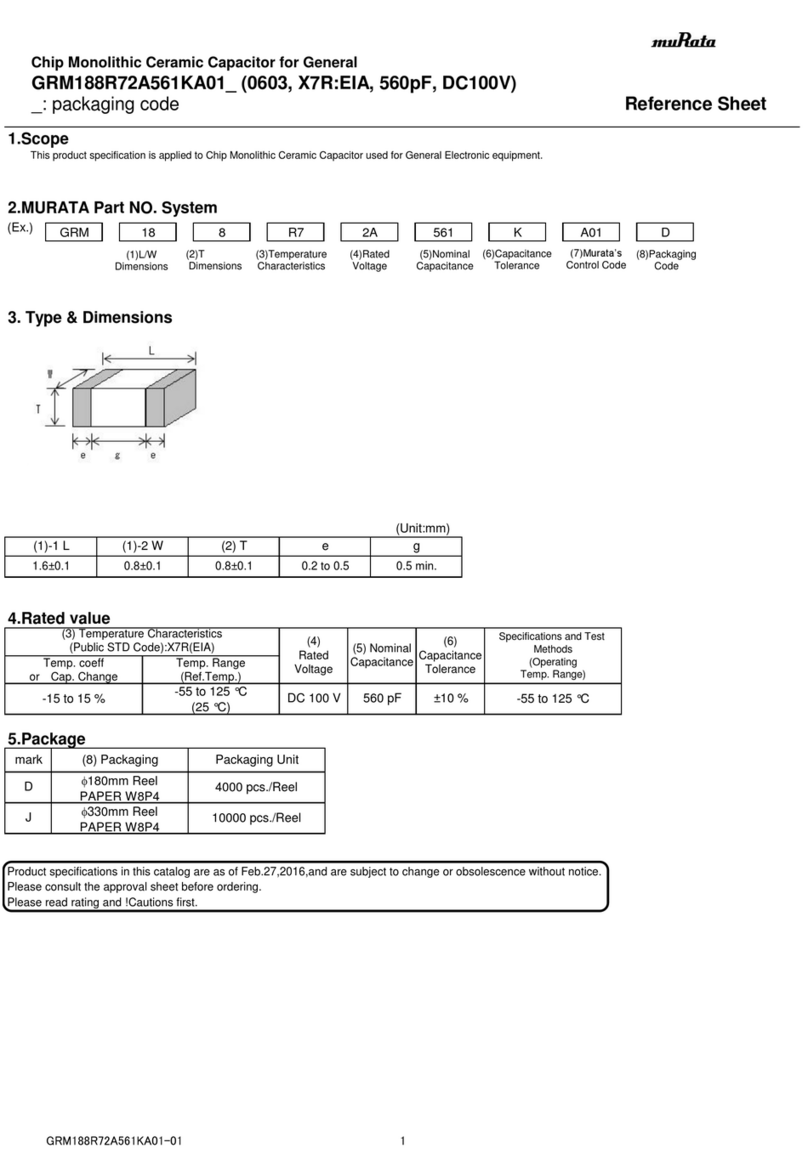
Murata
Murata GRM188R72A561KA01 Series Reference sheet
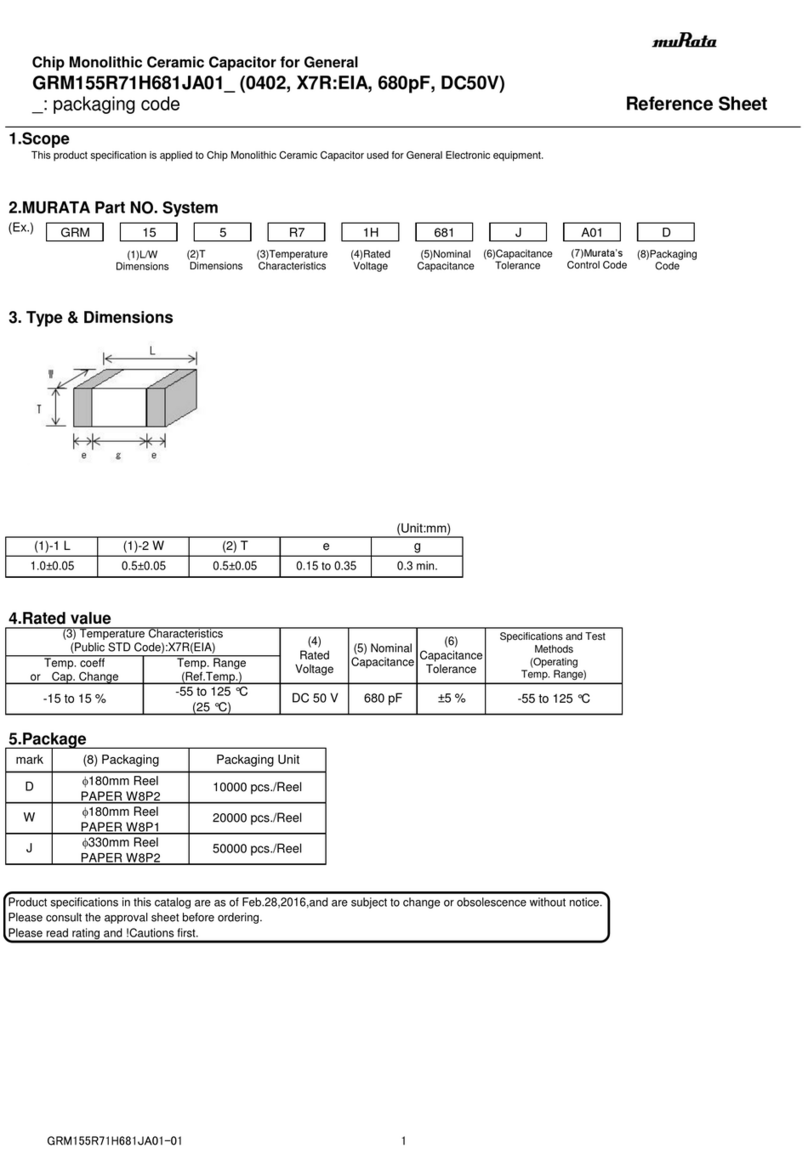
Murata
Murata GRM155R71H681JA01 Series Reference sheet

hager
hager univers N UC21LH1 Mounting instructions

Grundfos
Grundfos SM 111 Installation and operating instructions
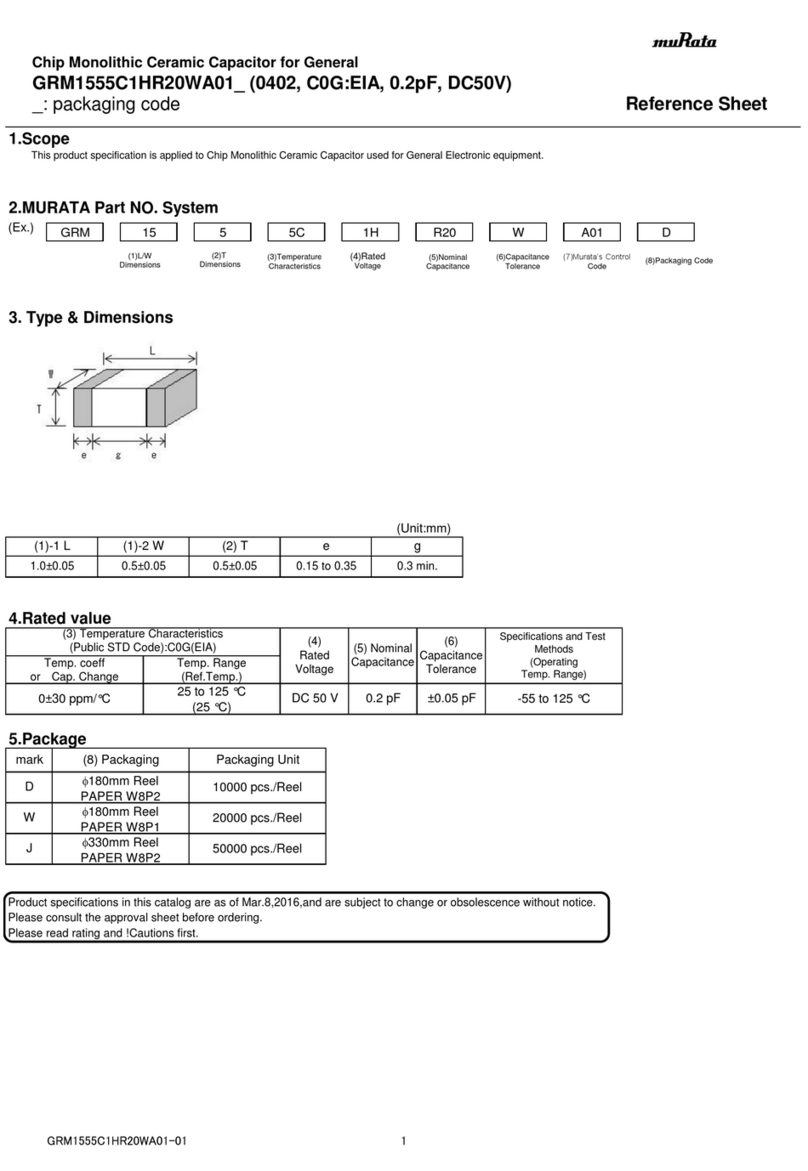
Murata
Murata GRM1555C1HR20WA01 Series Reference sheet

Champion Power Equipment
Champion Power Equipment 100868 Nstallation manual

Omron
Omron DRT2 SERIES DEVICENET SLAVES - OPERATION ... Operation manual
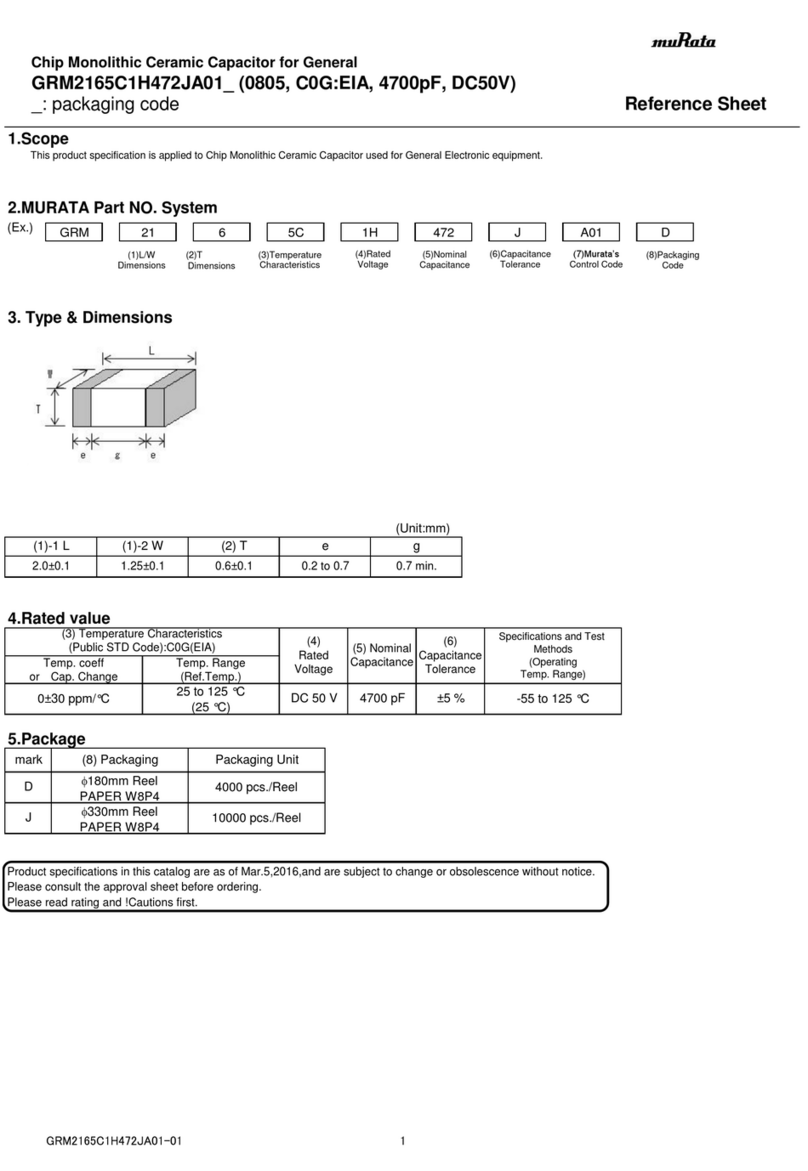
Murata
Murata GRM2165C1H472JA01 Series Reference sheet
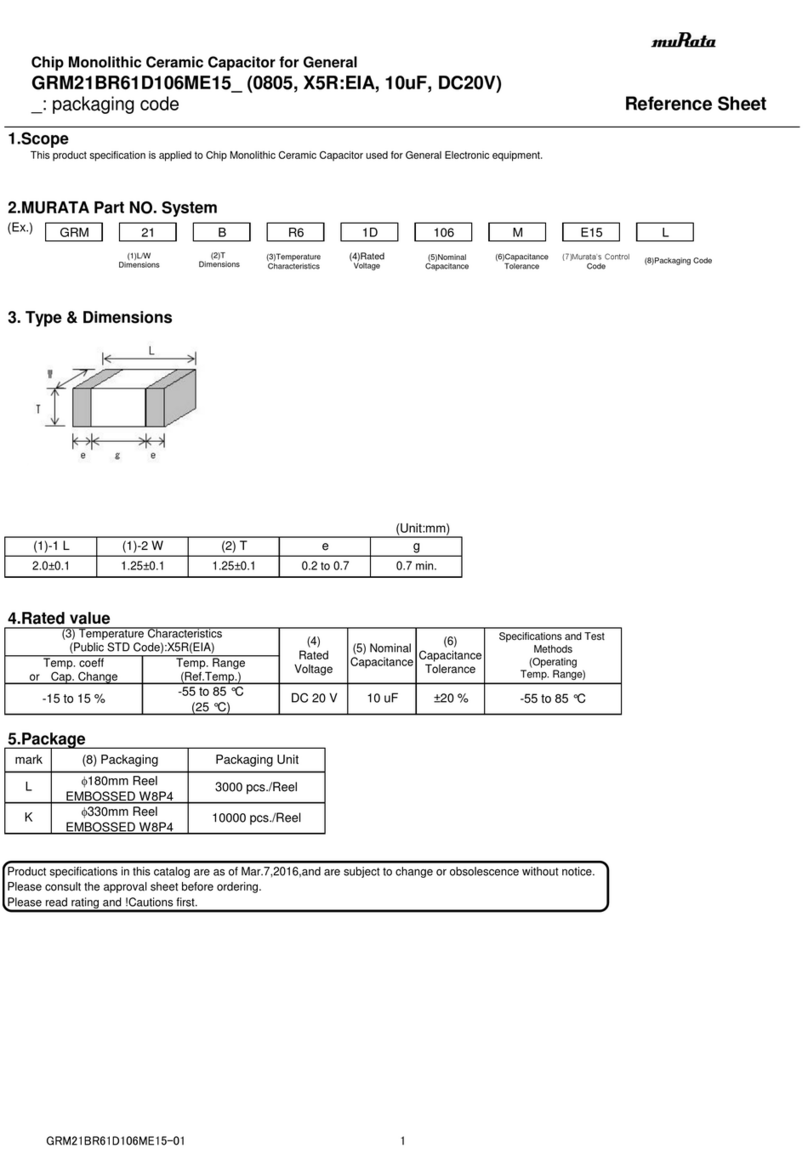
Murata
Murata GRM21BR61D106ME15 Series Reference sheet
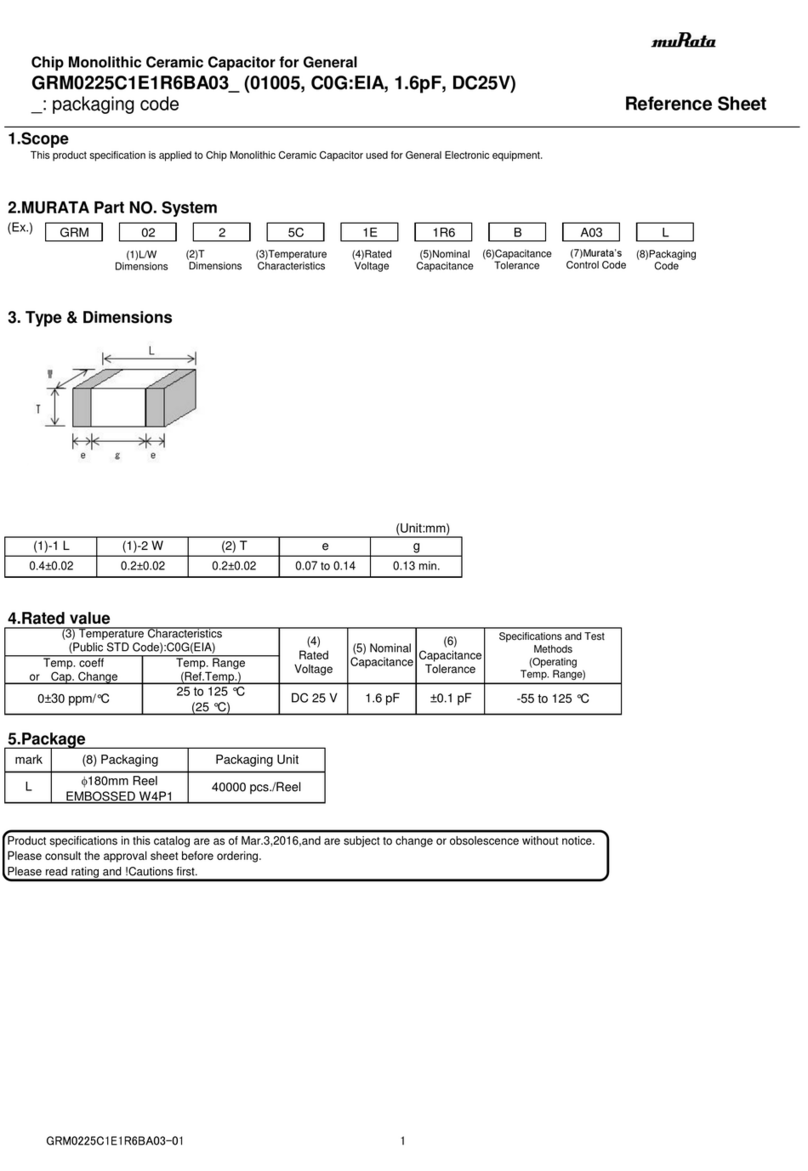
Murata
Murata GRM0225C1E1R6BA03 Series Reference sheet
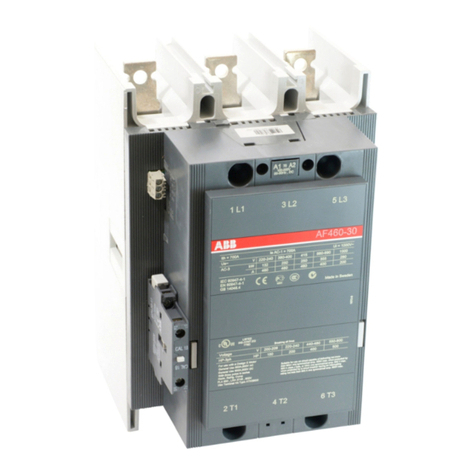
ABB
ABB AF400 operating instructions


